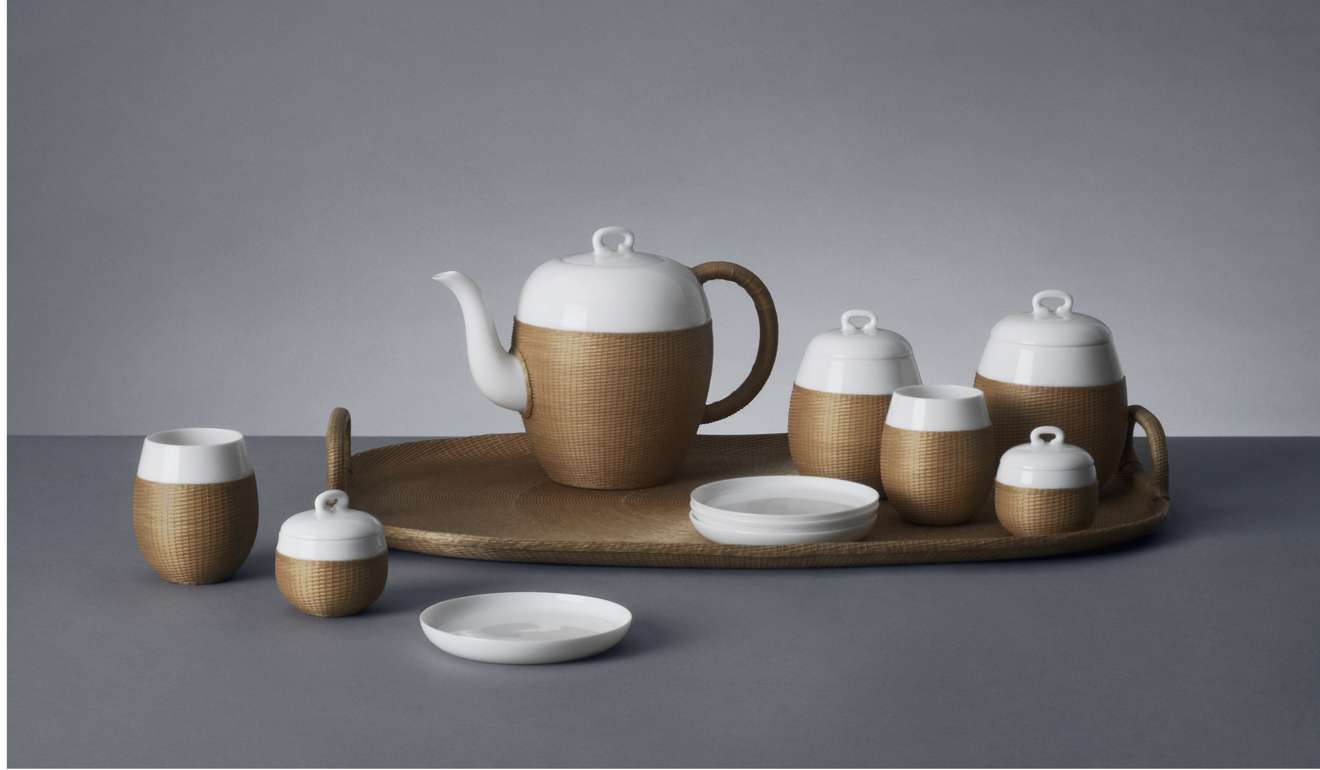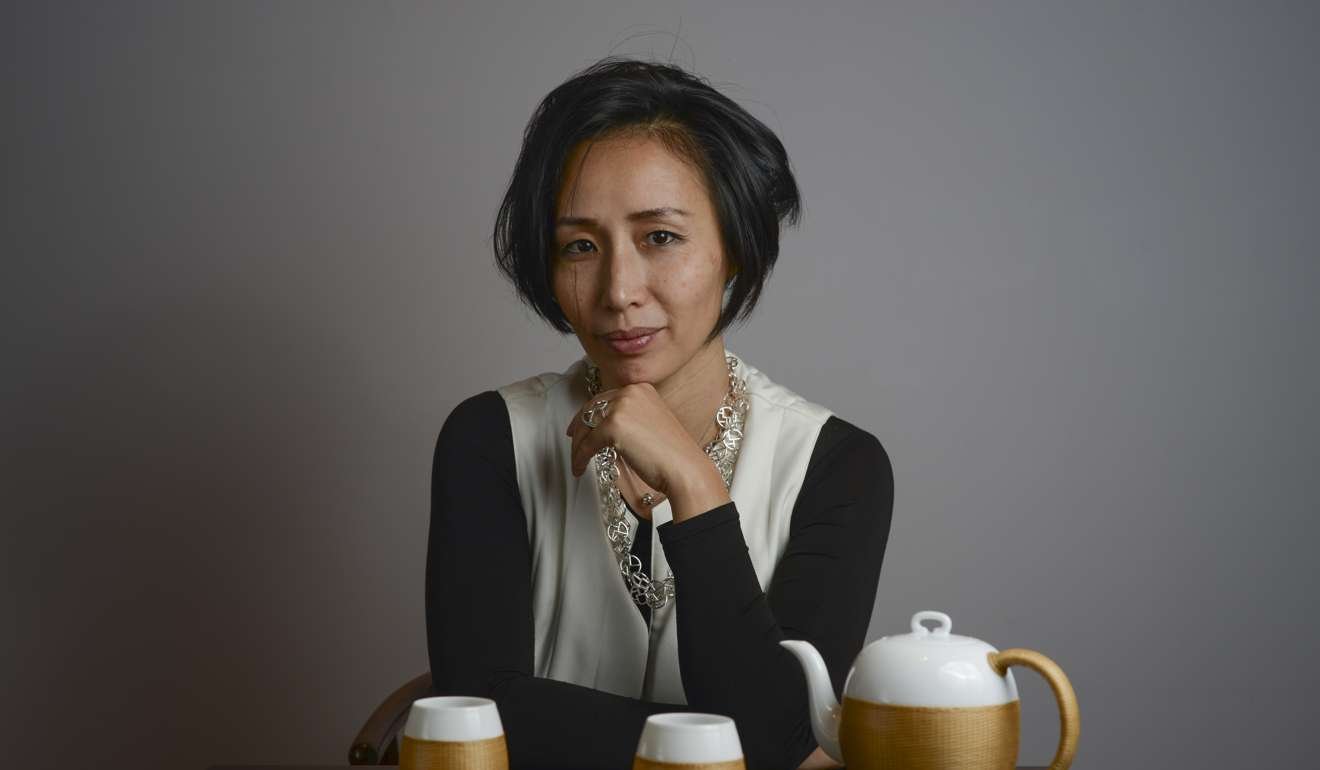
Jiang Qiong Er: a designer with a mission for tradition
Her Chinese lifestyle company Shang Xia uses ‘heritage to open the future’
Jiang Qiong Er is a designer with a mission, and it’s written in the name of her Chinese lifestyle company, Shang Xia. It literally translates as “above, below”, or “up, down”, but Jiang says, “Its true meaning is about heritage: to use heritage to open the future.”
Based in Shanghai, the luxury furniture, homeware and fashion brand is reviving traditional Chinese craftsmanship through contemporary design.
The furniture, for example, is made from walnut wood by master craftsmen using Ming-dynasty techniques such as mortise-and-tenon joints instead of nails, and is polished – and polished again, and again – until it’s as smooth as silk and just as pleasing to touch.
Sure enough, wandering hands are drawn to its elegant, satiny surfaces at Lane Crawford, where a Shang Xia range is now sold.
Emblematic of the brand is a reclining rocking chair, which takes five months to make by hand. That painstaking care shines from every grain in its sinuous frame of silky walnut and bed of braided, highly polished saddle leather.
Shang Xia, born in 2008, is the progeny of Jiang, its artistic director and CEO, and French luxury giant Hermes. The daughter of architect Xing Tonghe (who designed the Shanghai Museum), Jiang trained in Shanghai and Paris, and as a student won a young entrepreneur award from Xintiandi developer Vincent Lo that came with a prize of 100,000 yuan (US$14,500) and work space.

She set up her own design company and was producing installations for Hermès’ windows when she was invited to meet its CEO Patrick Thomas and artistic director Pierre-Alexis Dumas.
“It is a love story,” Jiang says of the collaboration. “It started with a simple human encounter. We discovered we shared the same life philosophy and passions. They learned about me; I came to understand how they operate, their culture, and we decided to work together. Shang Xia is so lucky to have this parent.”
Despite the French connection, the brand now has a standalone store in Paris as well as Shanghai and Beijing, and Shang Xia is very much a Chinese company, based on the artisan traditions of the mainland and seeking to restore pride in the “made in China” label.
“I travelled throughout China to discover traditional workshops and artisans, but I found 95 per cent of them were making only creative objects – nothing functional. Like our bamboo master: before he started working with us, he spent two years weaving an elephant. It was beautiful, but who needs a giant bamboo elephant?” Jiang says.
“I think the best use of these skills is to give them a new look, a new functionality, a new life. They should not be just decorative – they needed to be updated.”
So she designed the Bridge porcelain tea set with a coat woven from strands of bamboo so thin, at 0.35mm, that they can be shaved by hand only. Each teacup takes a skilled weaver about a week to complete.
“The bamboo protects your fingers from the heat of the tea,” Jiang says. “It’s beautiful and it serves a purpose.”
As well as furniture makers and bamboo weavers, Shang Xia employs sifus to produce delicate eggshell porcelain “as thin as a cicada’s wing”, and handmade cashmere felt clothing. Each time Jiang discovers a new technique, she sets about learning it herself.

“It takes 15 years to become a bamboo master,” she points out.
“But I learn the process and the technique, which helps me to understand and respect the [craft] and how to use it in a new way. We spend about two years working with the artisans. We have an R&D centre in Shanghai, where we develop designs, but we [have] traditional workshops around the country.
“I don’t think you could weave the bamboo in a city; you need the peace of the mountains.”
The bamboo is woven in Sichuan, the eggshell porcelain is produced in Jingdezhen, in Jiangxi province, while the felt is made using a Mongolian technique.
Jiang is currently learning to carve bamboo (“from a different region to the weaving: the bamboo is different”) and create blocks of tea.
The craftsmanship may be traditional, but the designs are not. The furniture, for example, subverts the Ming aesthetic by reversing the original concept of rounded exterior lines and square interior lines.
“It’s more contemporary and it’s visually lighter,” she says of the furniture’s square exterior and rounded interior lines. “The makers were ready to innovate.”
She has also found a practical purpose for calligraphers’ inkstones, using them as tea-ceremony trays and embedding them in tea tables.
“Few people really practice calligraphy any more. But as tea trays, they are useful. They absorb the tea and within a year they change colour, turning grey-brown,” she says, stroking the inkstone’s velvety surface. “Sometimes you need to break the code.”

